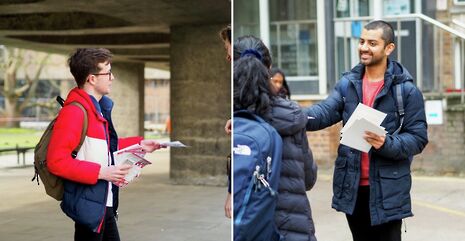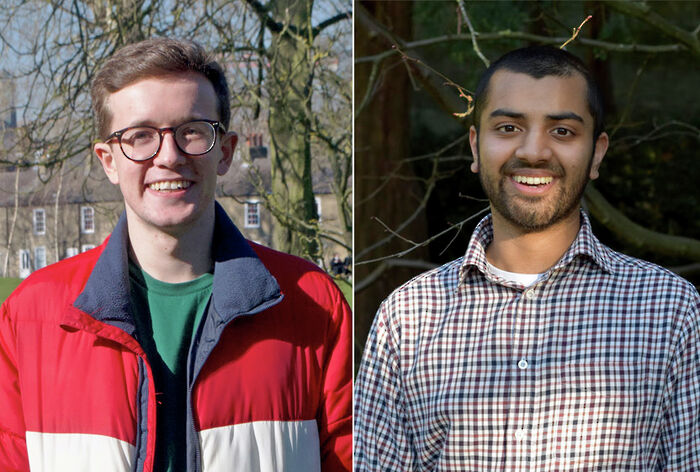
Analysis: What will it take to snatch victory in this year’s race for CUSU president?
With no right-leaning or CUSU outsider candidate, how will the two candidates for the presidency reach beyond typical CUSU voters to edge out the other?

Over the next week, Edward Parker Humphreys and Shadab Ahmed will have only each other to beat in the race for CUSU President.
Although it is not uncommon to see several sabbatical positions go uncontested, a two-candidate race for the presidency is unusual. With the exception of 2014, in which only one candidate ran for CUSU president, and 2010, when there were two, every year for the last ten years has seen at least three candidates in the competition for the presidency.
Last year proved that adding a third candidate into the mix could have a significant impact on the final results, as Evie Aspinall won in the second-round run-off, despite Siyang Wei leading in polls prior to the election and winning the highest number of first-preference votes. The second-preference votes of Connor MacDonald’s supporters were decisive in Aspinall’s victory, who received 592 second-preference votes while Wei only received 147.
The lack of an obvious right-leaning candidate this year could have an impact on the results, with both Ahmed and Parker Humphreys poised to appeal more to the left and left-of-centre student body. Parker Humphreys has been particularly involved with the student left, having been co-chair of CULC in 2017, while Ahmed, as a current sabbatical officer, is implicitly associated with the left-leaning image of CUSU. Both candidates are in favour of divestment, oppose the Prevent duty, and have expressed support for Cambridge Cut the Rent.
That said, the lack of a right-leaning candidate itself is not overwhelmingly significant – both Connor MacDonald’s loss last year and Jack Drury’s in 2017 demonstrate the difficulty conservative candidates have faced gaining support in what is a largely left-of-centre student body. But the lack of an obvious candidate means that the ‘CUCA vote’ could conceivably go either way – and potentially prove to be decisive in which candidate gains the presidency.
At the same time, there is a possibility that this cohort of voters will not materialise at all. Of the 1,076 votes for MacDonald last year, 337 – just under a third – did not express any second preference. A further 180 students voted as their first preference to re-open nominations. Although this is by no means conclusive evidence, it is worth noting that in the two-candidate race in 2010 the turnout was only 13.1% of the electoral roll, compared to 21.2% in the previous year. This is compared to last year’s turnout of 20.9%, and a 22.5% turnout in 2017, where three candidates were competing for the presidency.
Parker Humphreys and Ahmed will also face heightened competition for the left-wing vote, and arguably must distinguish themselves sufficiently so that they are not met with apathy from the majority of the student body. Both have substantial experience – Parker Humphreys as JCR President at Jesus College and Ahmed as CUSU Access & Funding Officer – and both have spoken about similar issues, including college inequalities and access. Ahmed is running on a platform of continuity and experience, while Parker Humphreys has promised to speak up for student issues including loneliness and the student workload.
Only time will tell whether the race will heat up as candidates seek to differentiate themselves, or if the lack of a third candidate will take the edge out of this year’s race.

All the election news, in one place
Comprehensive news and analysis on the CUSU/GU elections, collected.
Visit Varsity’s Elections 2019 hub.
 Interviews / You don’t need to peak at Cambridge, says Robin Harding31 December 2025
Interviews / You don’t need to peak at Cambridge, says Robin Harding31 December 2025 News / Unions protest handling of redundancies at Epidemiology Unit30 December 2025
News / Unions protest handling of redundancies at Epidemiology Unit30 December 2025 Comment / What happened to men at Cambridge?31 December 2025
Comment / What happened to men at Cambridge?31 December 2025 Features / ‘Treated like we’re incompetent’: ents officers on college micromanagement30 December 2025
Features / ‘Treated like we’re incompetent’: ents officers on college micromanagement30 December 2025 Theatre / We should be filming ADC productions31 December 2025
Theatre / We should be filming ADC productions31 December 2025









